6 Hip-Dominant Exercises for Glute and Hamstring Growth
You may have heard that if you want a bigger butt or beefier hamstrings, you need to squat—and then squat some more.
While there’s no doubt that squats are a great start, they aren’t enough to build balanced glute and hamstring mass.
To make better overall progress, you also need hip-dominant exercises, specifically those that allow you to train your glutes, hamstrings, and surrounding hip muscles through large ranges of motion with heavy weights.
Which hip-dominant exercises should you prioritize?
Based on my experience working with thousands of people, here are my top picks:
- Deadlift
- Romanian deadlift
- Deficit deadlift
- Hip thrust
- Single-Leg hip thrust
- Cable pull-through
In this article, you’ll learn why these hip-focused exercises are so effective, how they transform your physique and boost performance, and how to fit them into your routine to maximize your gains.
Key Takeaways
- A hip-dominant exercise is any lower body strength training exercise where most of the movement occurs at the hips, not the knees.
- People sometimes refer to hip-dominant exercises as “glute-dominant exercises” or “hamstring-dominant exercises” based on which muscles they emphasize.
- Hip-dominant exercises primarily train the glutes and hamstrings, but also involve other smaller muscles around the hips, like the hip adductors and abductors.
- The six best hip-dominant exercises for building glute and hamstring mass are deadlifts, Romanian deadlifts, deficit deadlifts, hip thrusts, single-leg hip thrusts, and cable pull-throughs.
- These exercises are effective because they allow you to lift heavy weights through large ranges of motion, which maximizes muscle growth and strength gains.
- Hip-dominant exercises improve lower body aesthetics, enhance athletic performance, and may reduce injury risk.
- What Are Hip-Dominant Exercises
- The 6 Best Hip-Dominant Exercises for Glute and Hamstring Mass
- How to Add Hip-Dominant Exercises to Your Routine
- FAQ #1: What are the benefits of hip-dominant exercises?
- FAQ #2: Are squats knee or hip-dominant?
- FAQ #3: Are step-ups knee or hip-dominant?
Table of Contents
+What Are Hip-Dominant Exercises
Hip-dominant exercises are lower body strength training exercises where most of the movement occurs at the hips. They contrast with knee-dominant exercises, where most of the movement occurs at the knees. Here’s a visual to highlight this difference:
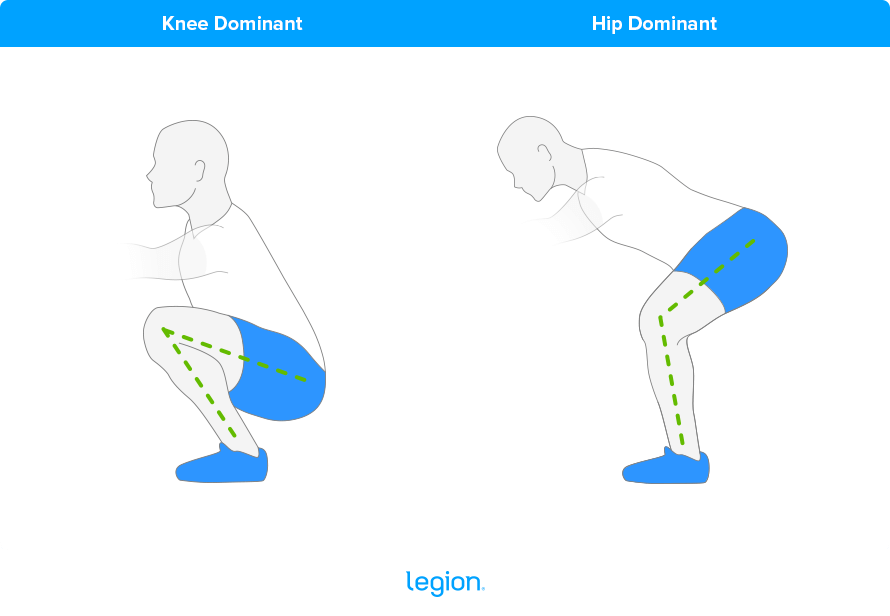
By “hinging” at the hips and keeping knee movement minimal, you primarily train the glutes, hamstrings, and other smaller muscles around the hips, like the hip adductors and hip abductors (the muscles that move your thighs together and apart).
Glute vs. Hamstring-Dominant Exercises
People sometimes label hip-dominant exercises differently depending on which muscles are most involved. For instance, people often call exercises that emphasize the glutes “glute-dominant exercises,” and exercises that focus on the hamstrings “hamstring-dominant exercises.”
No exercise isolates the glutes or hamstrings entirely, however. Glute- or hamstring-dominant exercises may prioritize one muscle, but they still engage the glutes, hamstrings, and surrounding muscles mentioned above, so they all qualify as hip-dominant exercises.
The 6 Best Hip-Dominant Exercises for Glute and Hamstring Mass
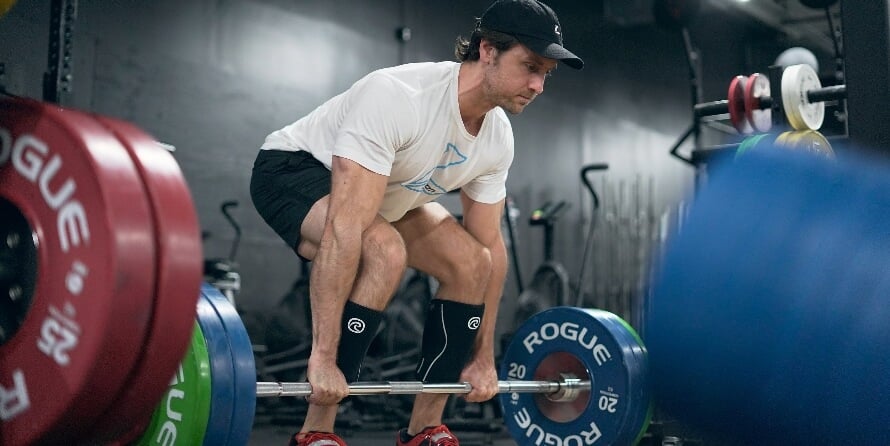
Hip-dominant exercises come in many forms, but six stand head and shoulders above the rest.
These exercises allow you to train your glutes and hamstrings with heavy weights through large ranges of motion, which are crucial factors for maximizing muscle growth and strength gain.
Add these hip-dominant exercises to your routine, and watch how your butt and gams grow.
1. Deadlift
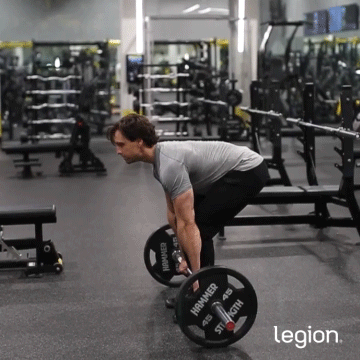
The deadlift is the ultimate hip-dominant exercise because no other movement targets as many hip muscles with such heavy loads. In other words, it’s ideal for putting massive tension on your glutes, hamstrings, and adductors, which is crucial for building muscle and strength.
That said, the conventional deadlift (shown above) isn’t for everyone, especially if you have lower back issues. If it feels uncomfortable or awkward, try the sumo or trap-bar deadlift instead. These variations train your hip muscles just like the conventional deadlift but can be gentler on your spine.
READ MORE: How to Deadlift with Proper Technique
2. Romanian Deadlift
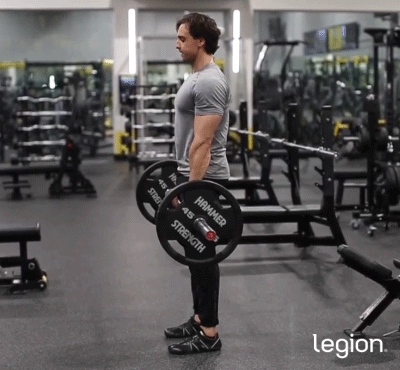
The Romanian deadlift is another top-tier hip-dominant exercise because it trains the same muscles as the regular deadlift—glutes, hamstrings, and adductors—without being as taxing. This makes it perfect for training your hip muscles more frequently without burning you out.
Another benefit of the Romanian deadlift is that it trains your hamstrings in a stretched position. Research shows that this is significant because training a muscle while stretched can boost muscle growth.
READ MORE: How to Do the Romanian Deadlift: Form, Benefits, and Variations
3. Deficit Deadlift
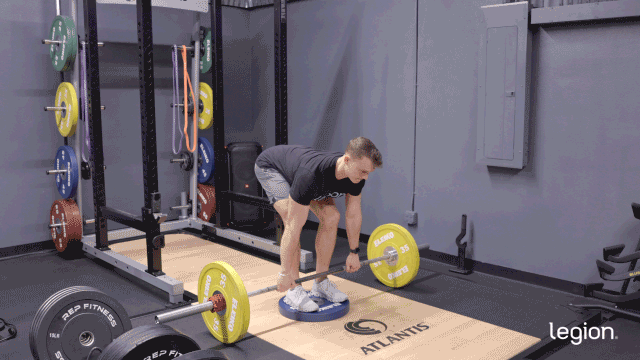
The deficit deadlift increases the range of motion by elevating your feet on a weight plate or step. This forces your hamstrings and glutes to work even harder while stretched, making it a fantastic hamstring-dominant exercise for building mass and strength.
Not everyone has the flexibility to perform the deficit deadlift correctly, however. If you can’t lower the weight without rounding your back, stick with the regular deadlift until your flexibility improves.
4. Hip Thrust
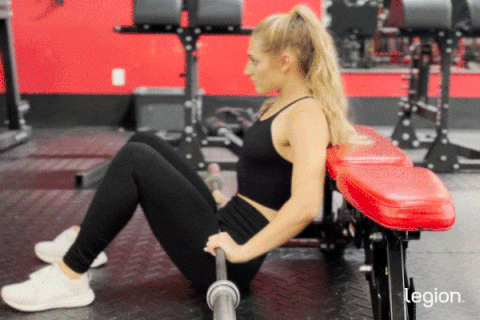
Research shows that the hip thrust is a powerhouse for glute development, especially when combined with other effective glute exercises. One of its main benefits is that by positioning the barbell in your lap, it forces your glutes to work hard throughout the entire range of motion—something few other exercises achieve.
Another advantage of the hip thrust is you perform it with your back supported on a bench, making it a solid glute-dominant exercise for those with lower back issues.
READ MORE: How to Do the Barbell Hip Thrust: Form, Mistakes & Alternatives
5. Single-Leg Hip Thrust
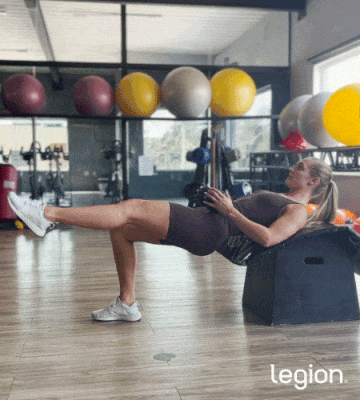
The single-leg hip thrust trains each side of your body independently, which helps you gain symmetrical glute mass.
What’s more, studies suggest unilateral exercises (those that train each leg separately) are superior to bilateral hip-dominant exercises (those that train both legs simultaneously) for developing smaller muscles around the hips, like the gluteus minimus. The instability of training one leg at a time forces these muscles to work harder, which spurs them to grow.
In other words, to maximize all-around growth, it’s sensible to include a mix of unilateral and bilateral hip-dominant exercises in your routine.
RELATED: Unilateral vs. Bilateral Exercises: Which Is Better for Muscle Building and Performance?
6. Cable Pull-Through
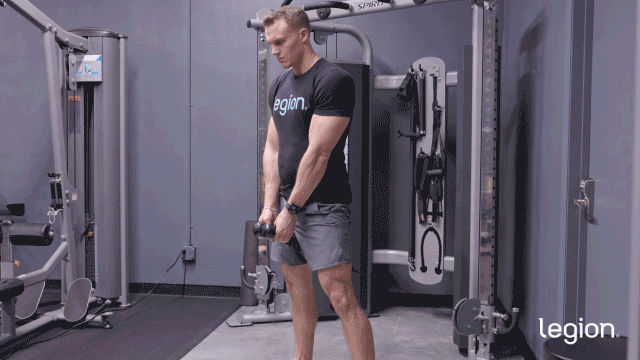
The cable pull-through is a fantastic hip-dominant exercise for training the glutes and hamstrings because it provides a different stimulus to free weights.
The benefit of doing hip-dominant exercises that train your muscles in different ways—with different equipment, through different ranges of motion, and at different angles—is that it helps you build more balanced size and strength than less varied training,
READ MORE: How to Do Cable Pull-Throughs: Form, Benefits & Alternatives
How to Add Hip-Dominant Exercises to Your Routine
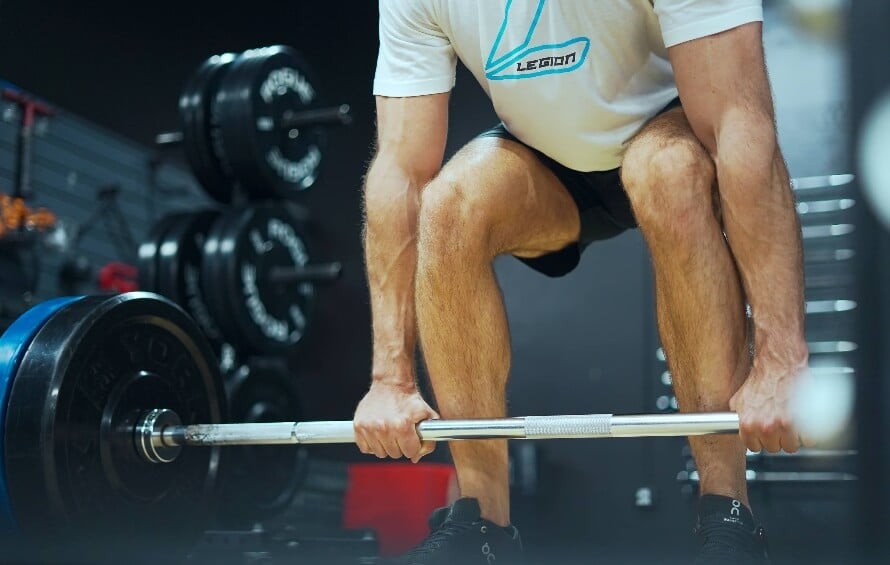
You can add hip-dominant exercises to your routine in countless ways, but one of the most effective strategies is to dedicate one lower body workout each week to hip-focused training.
This approach works best if you follow a workout split with two lower body sessions per week, like the upper lower split. You can emphasize hip-dominant exercises in one workout and prioritize knee-dominant exercises in the other to ensure you gain balanced mass and strength.
READ MORE: The Best 3-, 4- & 5-Day Upper Lower Workout Splits for Mass
Here are some guidelines for building an effective hip-dominant workout:
- Start with a deadlift variation: Conventional, Romanian, or deficit deadlifts are ideal, but sumo and trap-bar deadlifts are solid alternatives. Do 3 sets in the 4-to-6 or 6-to-8 rep range.
- Do a glute-dominant squat exercise: While not a hip hinge, glute-dominant squat exercises add variety that maximizes glute growth. Some good options are the back squat, step-up, or Bulgarian split squat. Again, do 3 sets in the 4-to-6 or 6-to-8 rep range.
- Do a hip thrust variation third: The barbell or single-leg versions are most fitting, though a machine hip thrust is viable. You can train with slightly lighter weights for these exercises—do 3 sets of 6-to-8 or 8-to-10 reps.
- Finish with a glute and hamstring isolation exercise: Cable pull-throughs work best, but machine or Nordic leg curls are decent substitutions. Do 3 sets in the 8-to-10 or 10-to-12 rep range.
FAQ #1: What are the benefits of hip-dominant exercises?
The main benefits of hip-dominant exercises are:
- Enhanced Lower Body Aesthetics: Many weightlifters prioritize the muscles they see in the mirror, but neglect those on the back of their body. Doing hip-dominant exercises addresses this imbalance so you don’t have weak points in your physique.
- Improved Athletic Performance: The glutes and hamstrings are highly involved in all kinds of athletic movements, such as running, jumping, and landing. Strengthening them helps you perform these movements with more speed, agility, and power.
- Reduced Injury Risk: Hamstring strains are the most common lower body injury in athletes. But using hip-dominant exercises to strengthen your hamstrings—especially while stretched—can significantly reduce your risk of injury.
FAQ #2: Are squats knee or hip-dominant?
Squats aren’t strictly knee- or hip-dominant—they engage both knee and hip muscles at the same time. When you squat, the glutes (and to some extent, the hamstrings) work to extend the hips, while the quads extend the knees.
Variations like the back squat likely emphasize the hip muscles slightly more because of where the bar sits on your back, while front squats are probably marginally more knee-dominant because your knees bend more and you maintain a more upright torso. However, both variations train the same muscle groups in similar ways.
FAQ #3: Are step-ups knee or hip-dominant?
While step-ups are similar to squats in that they train both the knee and hip muscles simultaneously, people generally consider them knee-dominant. This is because the quads bear the brunt of the load, particularly when you keep an upright torso.
That said, the glutes are also heavily involved, so they’re effective for gaining glute mass and strength, even if they aren’t an out-and-out hip-dominant exercise.
The post 6 Hip-Dominant Exercises for Glute and Hamstring Growth appeared first on Legion Athletics.
https://ift.tt/tQUi1I7 October 30, 2024 at 06:00PM Legion Athletics
Comments
Post a Comment